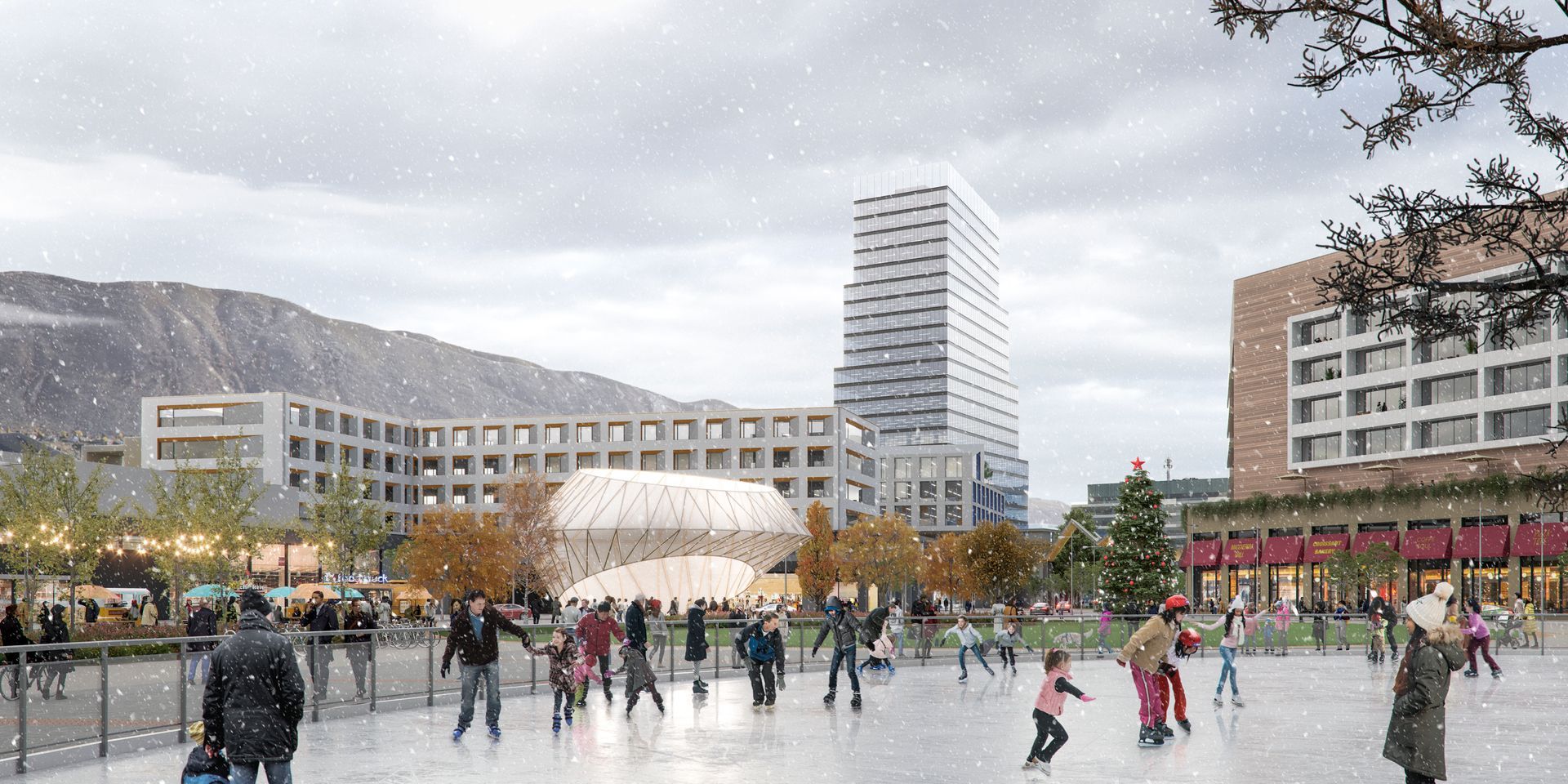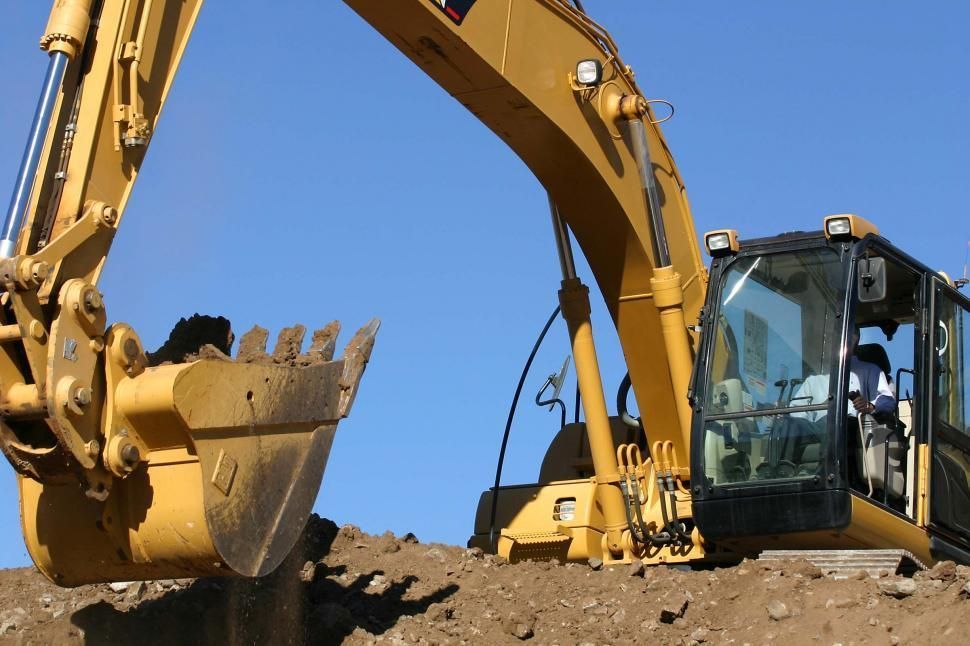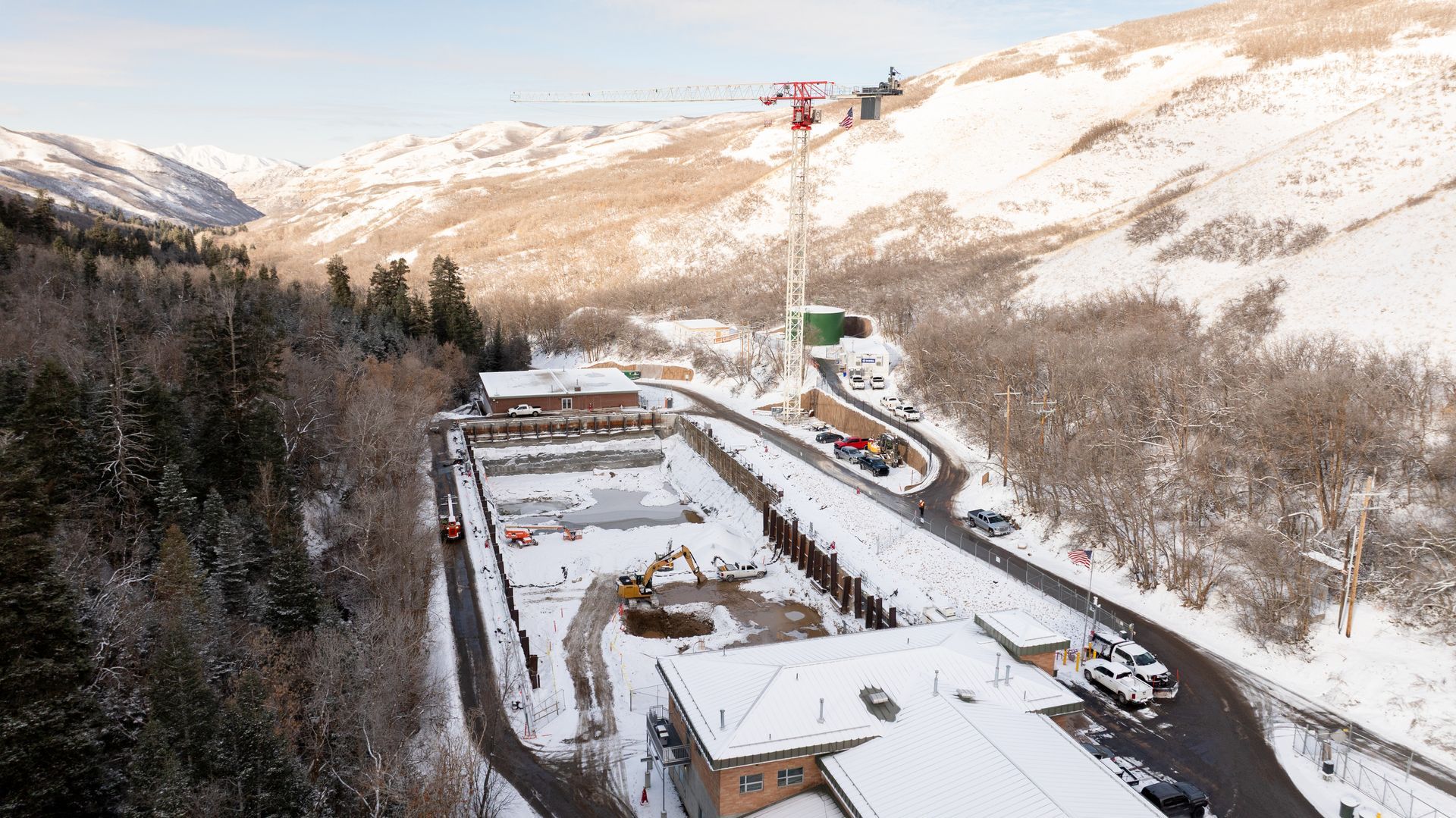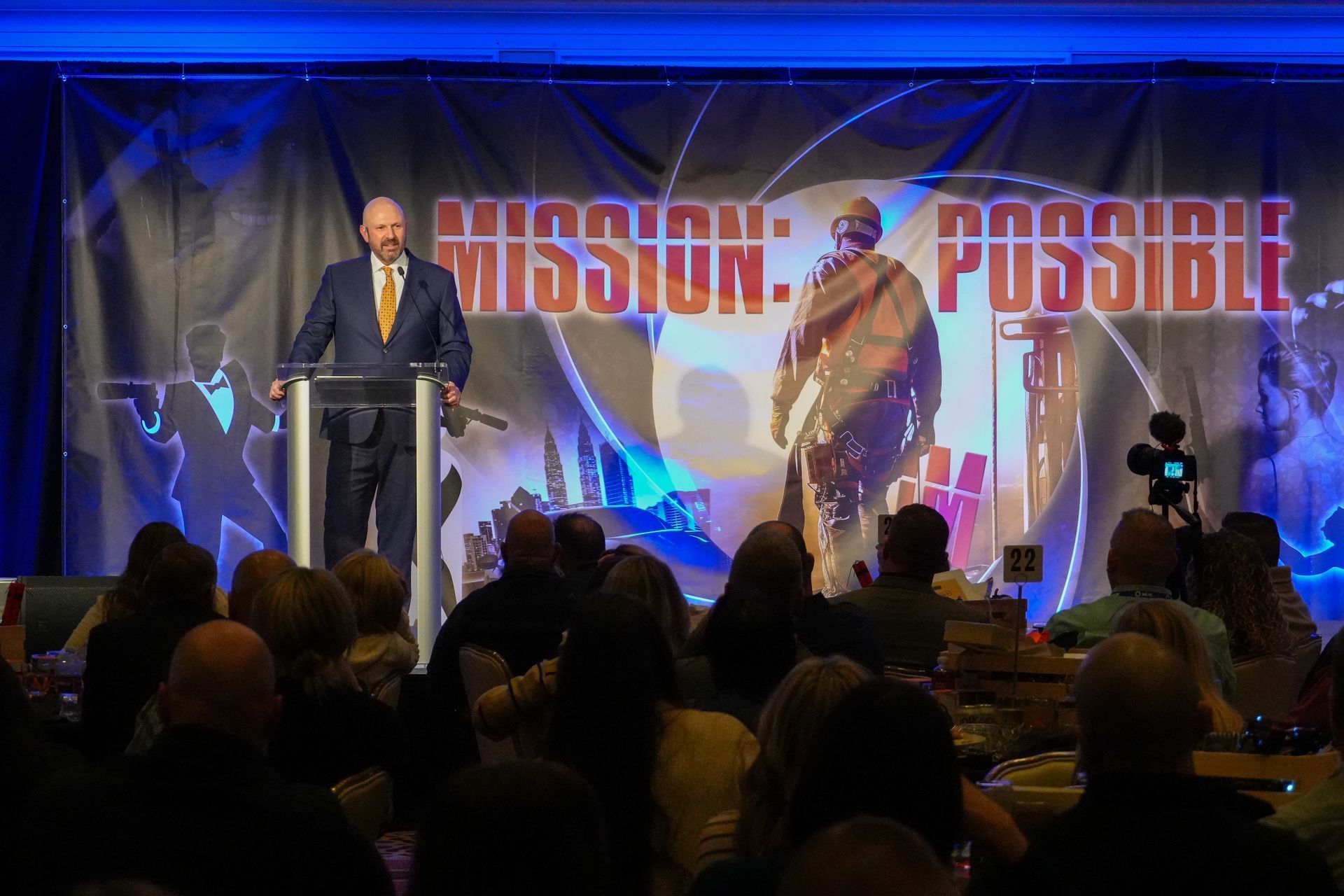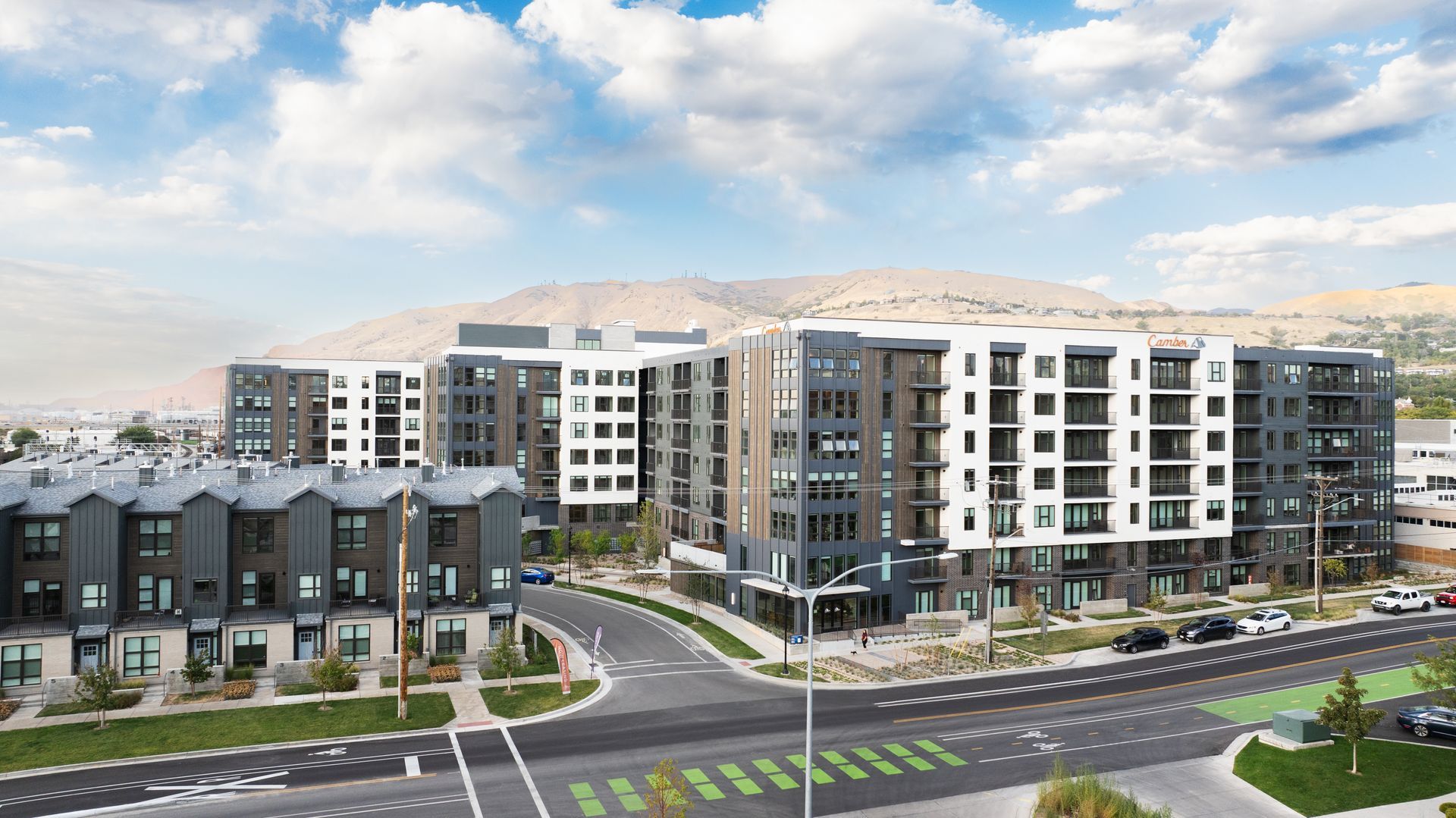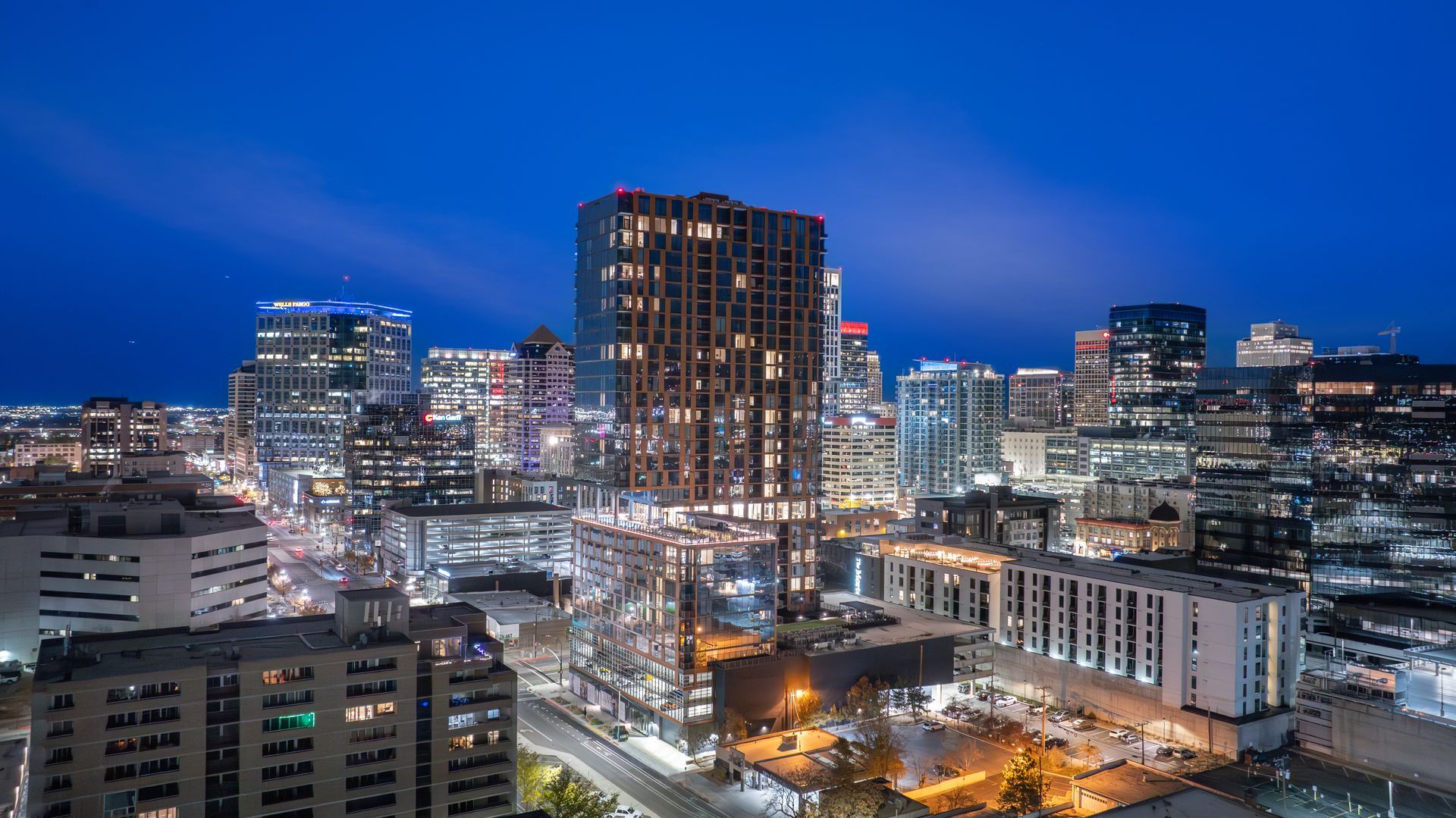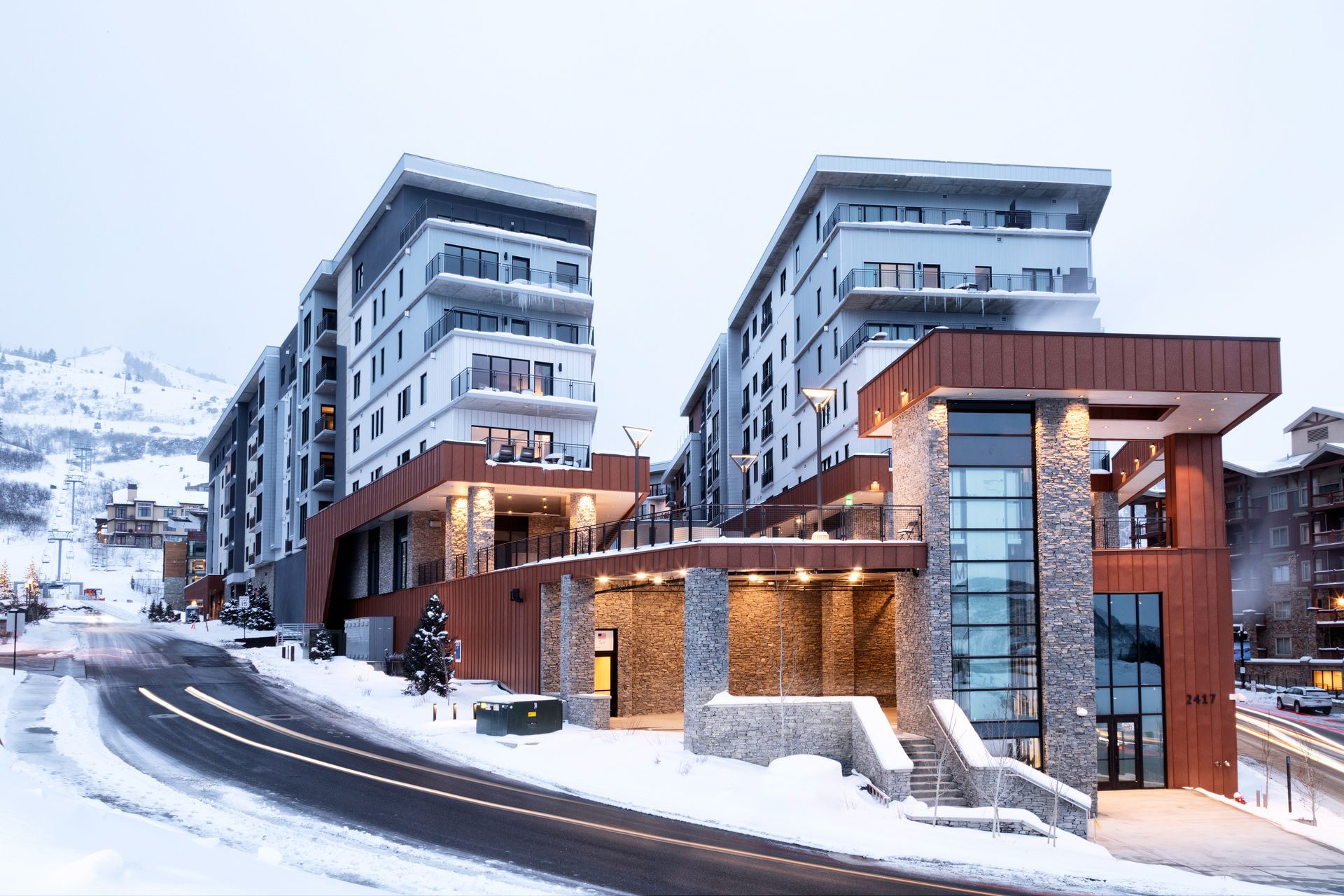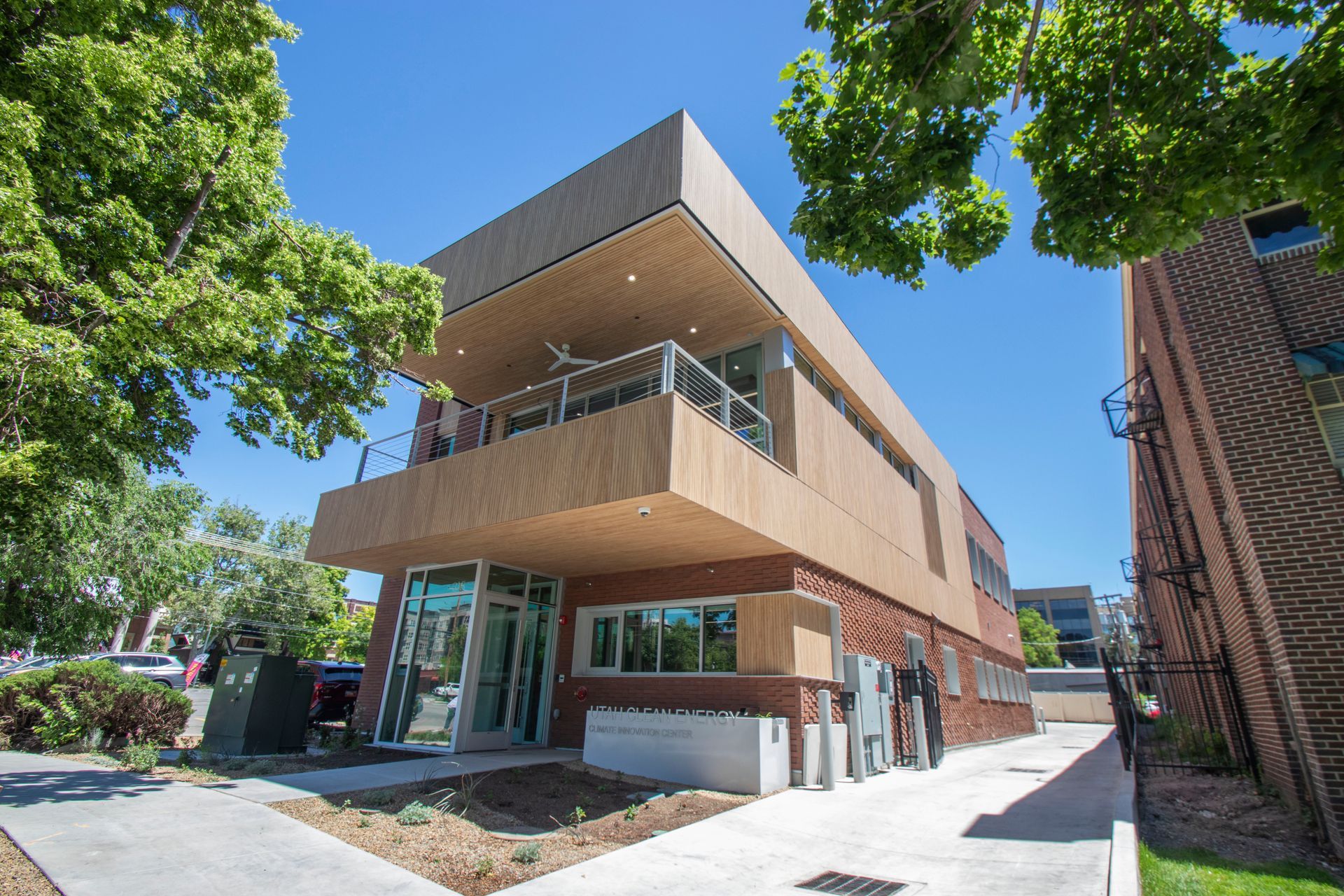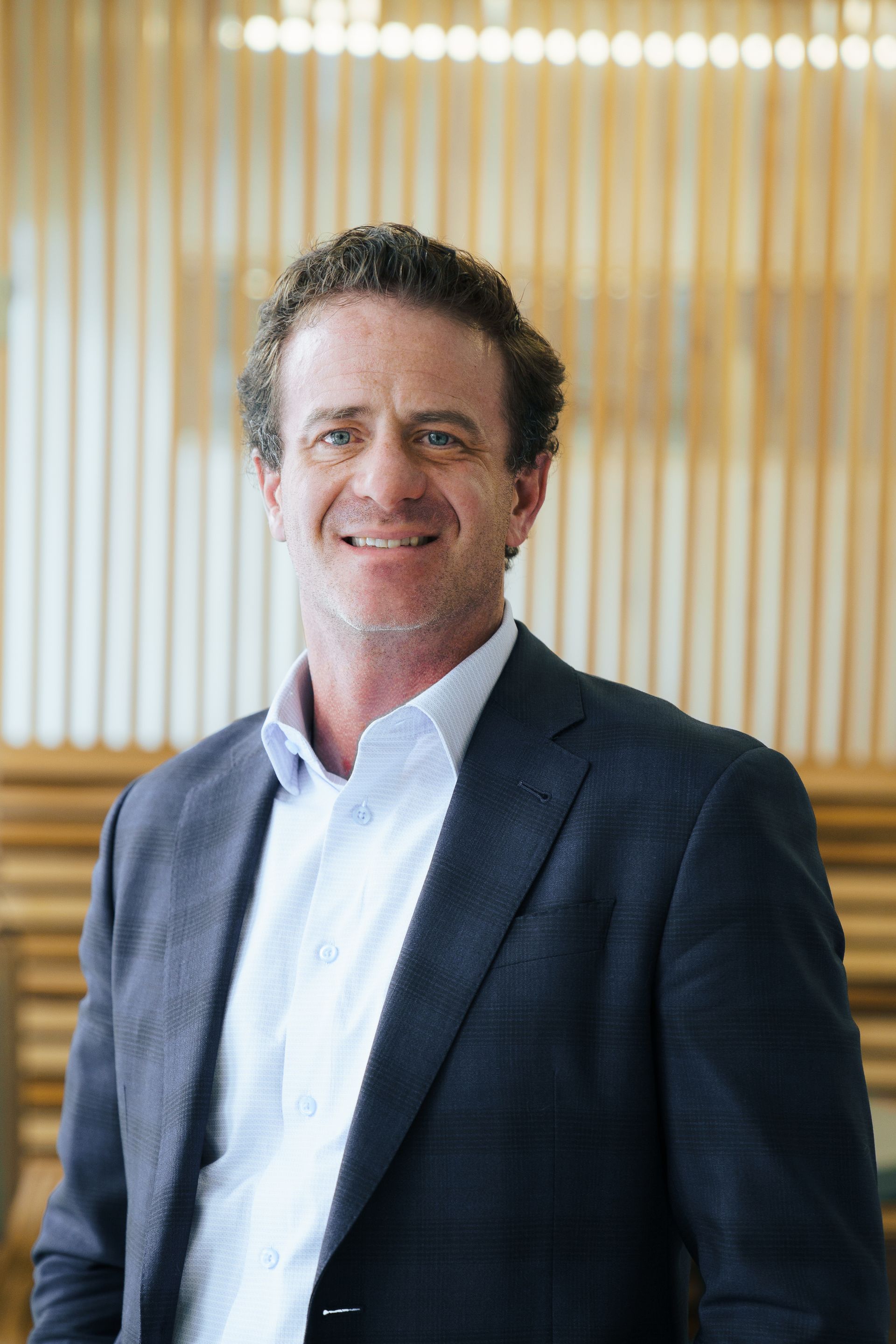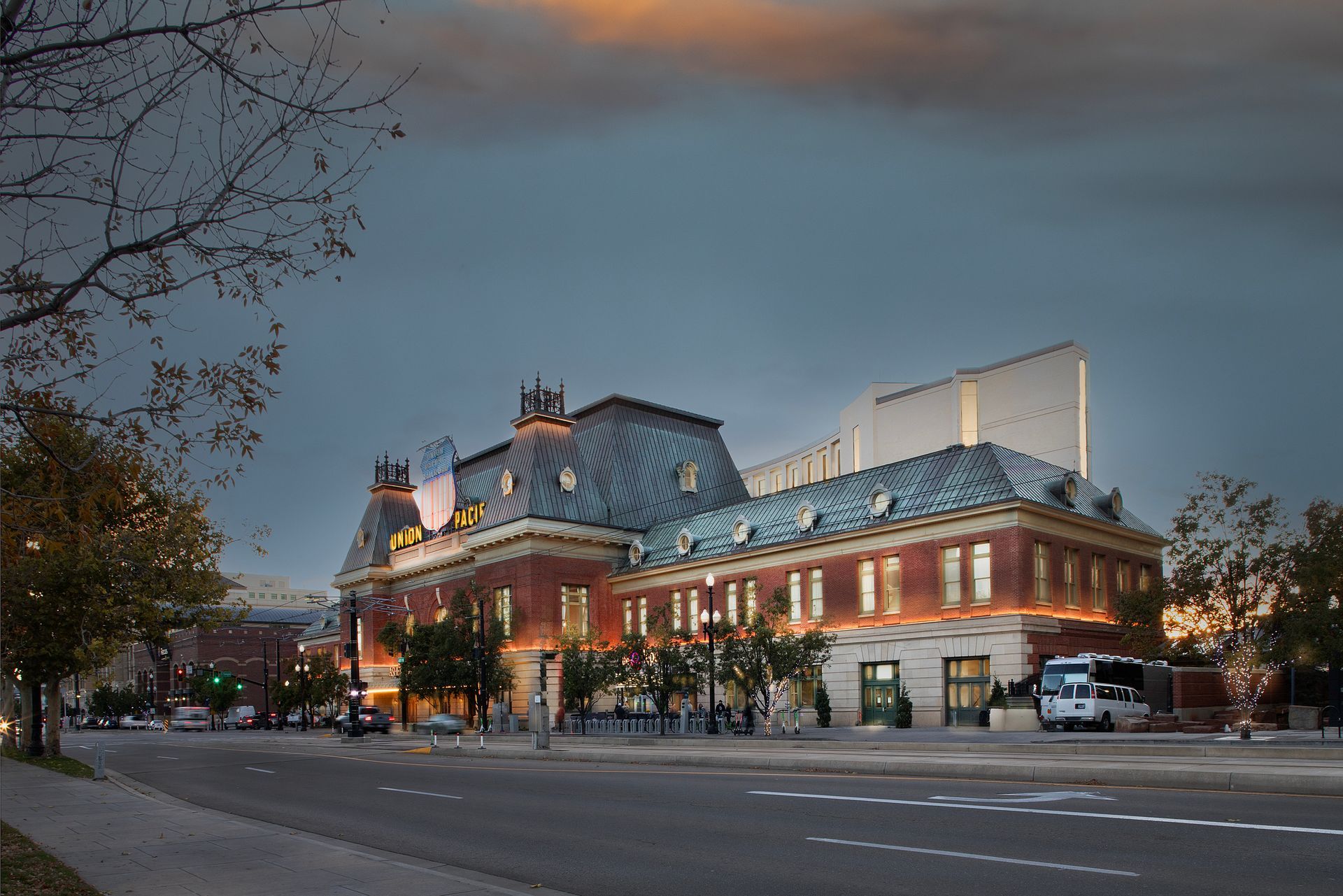There has never been a real estate development opportunity quite like this in the entire U.S., let alone Utah, with 600 acres of wide-open, developable land coming online at once in the middle of Utah’s top two MSAs.
By Brad Fullmer
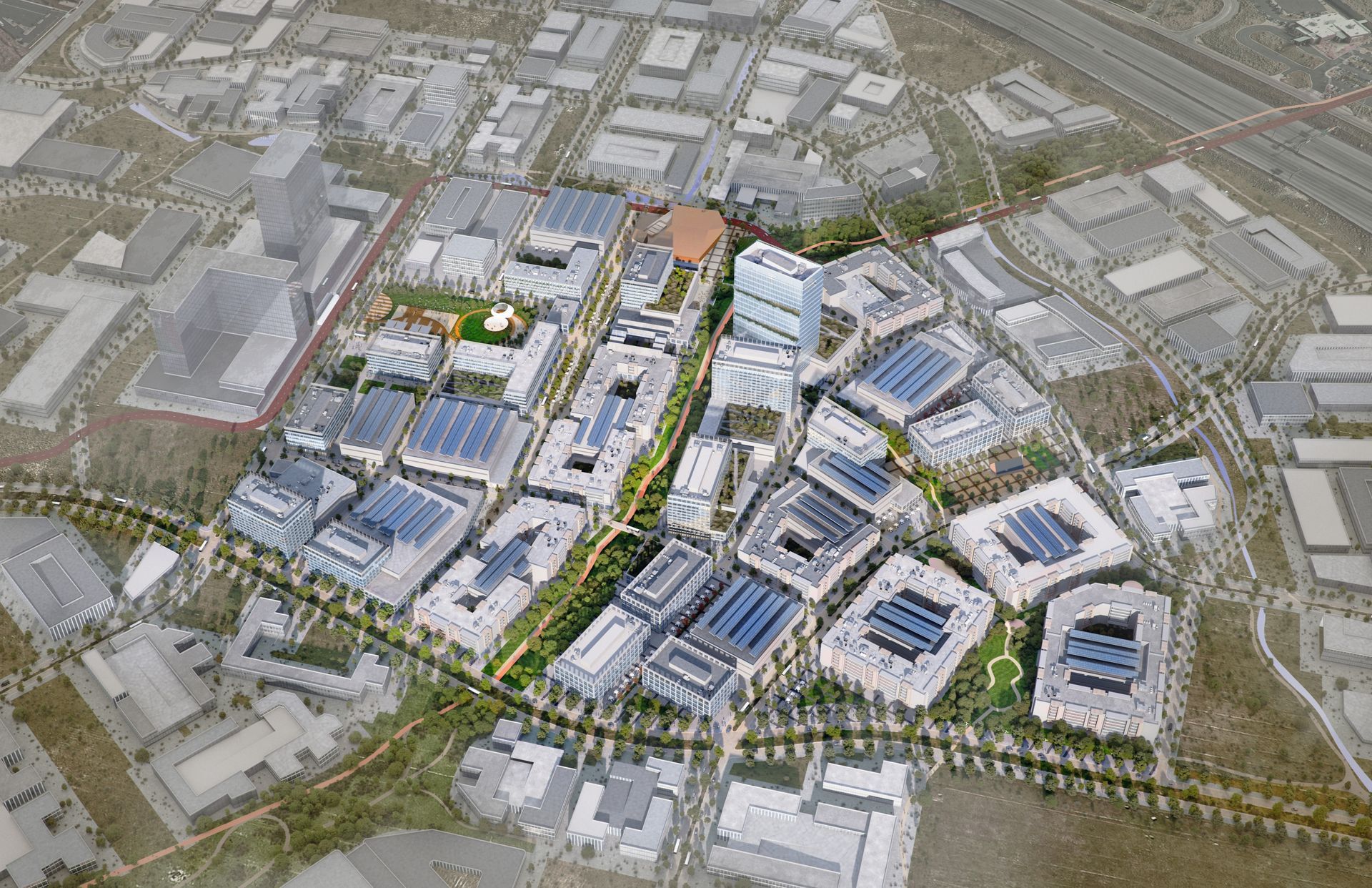
Hailed as the one of the most exciting—and literally unprecedented—development projects in the entire U.S., The Point—a 600-acre parcel of state-owned land that was home to the Utah State Prison in Draper for more than 70 years (1951-2022)—is steadily progressing, with initial Phase I design efforts in full swing as the demolition phase continues through the year.
“This is a once-in-a-lifetime opportunity, a generational opportunity” gushed Abbey Ehman, Vice President at Dallas-based Lincoln Property Company and a Principal with Innovation Point Partners (IPP), a three-firm team comprised of Lincoln, Salt Lake-based Colmena Group, and Draper-based Wadsworth Development Group (WDG). “The prison preserved what would have been developed long ago.”
“If there is a Super Bowl in real estate development, this is (it),” added Lance Bullen, Founder of Colmena. “We feel prepared. We’ve worked hard to get to this point. The team we have, this will bring out all the talents, skillsets, and strengths we have. We feel an overwhelming responsibility to do something that’s never been done before in this state. It’s much bigger than any one of our companies. It feels at times overwhelming, but I wouldn’t trade this seat for anything.”
“Being a long-time resident of Draper, I have a passion to make sure Draper is a good place to live, and this will do nothing but elevate this area,” said Kip Wadsworth, CEO of WDG. “We’re really creating our own city from the ground up, creating something from wide open space. It’s a chance to put our signature on the state for generations to come.”
Ehman said her firm has long been interested in working in Utah, and they indeed made a splash in the real estate market with The Point.
“We knew we wanted to be in Utah, but it can be a tough market to break into if you don’t have a presence already,” said Ehman. “We are excited about the market dynamics. It had to be the right site, the right opportunity, with the goal of bringing some of our known tenants to the market. There is no more important site or opportunity to show how innovation and development can come together. (It’s about) what we can do better—it’s a great responsibility.”
Public Input Critical, Team Synergy a Boon
It’s been nearly four years—July 2019—since Alan Matheson signed on as Executive Director at Point of the Mountain State Land Authority (POMSLA), and during that time he’s endured hundreds of meetings (in-person and digital) and patiently waited to get to this juncture, where actual plans are being drawn. He said more than 12,000 public members participated in the planning process—their input and suggestions are considered vital to the project’s success.
“This has been a long, rigorous process,” said Matheson. “We’ve captured (public) values and aspirations. We’ve had expert planners that have translated those ideas into plans. We’ve refined the plan further for Phase I. The major idea hasn’t changed, the expression of it has a bit. It’s rewarding to show the public we listened in building out their vision. We have a long way to go, but we’re on a great path to get there.”
“Public engagement is huge for us,” echoed Ehman. “We are the stewards of the state’s vision, and we’ll continue to have this engaging process with the community.”
Synergy within the IPP team—and with POMSLA board members—has been strong from the beginning, said Ehman. Lincoln’s 57-year history and status as a top 10 U.S. development firm, combined with the local expertise and experience of Colmena and WDG, made for a comprehensive team. Ehman said the proposal process was intense.
“Full credit to Alan and his team and the process they (established)—it is the most robust and comprehensive public-private solicitation process Lincoln has ever been a part of,” said Ehman. “It speaks volumes about the intent behind the process. It was collaborative, interactive. We had multiple charettes and conversations to engage our design team.”
“I’ve been in a lot of (joint ventures) in constructions and real estate and this team has come together as well as any have,” said Wadsworth. “There is always someone on the team who can find an answer, solve a problem. 90% of the time we see eye-to-eye on solutions. It’s been great to see the outside perspective of Lincoln—Lance and I can learn from them and help them with local government entities. The whole is greater than the sum of its parts.”
“It’s been appealing to have this combination of national breadth and expertise combined with Utah connections so we can bring in great ideas and resources,” said Matheson.
“We knew we couldn’t be successful without local partners,” Ehman added. “Colmena and Wadsworth already had a proven track record of executing projects together and we saw great synergy in our skillsets.”
She said Kip’s past experience (including CEO) working at heavy/civil firm Ralph L. Wadsworth Construction of Draper makes him “familiar with large-scale infrastructure projects, and that’s (a big part of) what (Phase I) is.”
Colmena, she said, is “truly a community-based developer—we appreciate their outreach approach. It came down to having similar values and complimentary skill sets.”
Location, Location, Location
The fact that The Point is sandwiched a reasonably equal distance between Utah’s two largest metro areas—Salt Lake City is 19 miles north, Provo is 29 miles south—is what makes this development opportunity so mouthwatering. It’s unheard of for an undeveloped chunk of land this size to all at once become developable in the heart of two major MSAs—Metropolitan Statistical Areas. Matheson said the sheer potential of this vast, wide-open space to become another downtown-like, urban destination in Salt Lake County is “truly unique.”
“It’s really a distinct honor in creating perhaps the premier economic development project in Utah’s history,” he said. “There is also a heavy responsibility to get it right. We are taking a prudent approach to development that ensures we protect and maximize the public’s investment at the site. This is one of the greatest economic and quality of life opportunities in our great state. The Phase I development plans reflect robust public feedback and will catalyze future development for many years to come.”
Signature elements of Phase I—which is a 99-acre parcel (18% of total acreage), 66 of which are developable—were recently shared with the public. Among the notable items:
● 3,000+ multi-family units (out of approx. 7,400 housing units total), including affordable housing units, with every home located within two blocks of a park or trail.
● 220,000 SF of world-class retail, shopping, restaurants, and grocery stores.
● A 3,000-capacity entertainment venue that will host 200+ events annually.
● 2 million+ SF of office space.
● Creation of 14,000+ local jobs.
● 16 acres of parks, including a “Central Park”.
● Five miles of sidewalks and trails, including the “River-to-Range Trail” and open space system.
● 100% drought-tolerant landscaping.
● Reductions in water use that result in the equivalent of 250 Olympic-sized swimming pools of water saved annually.
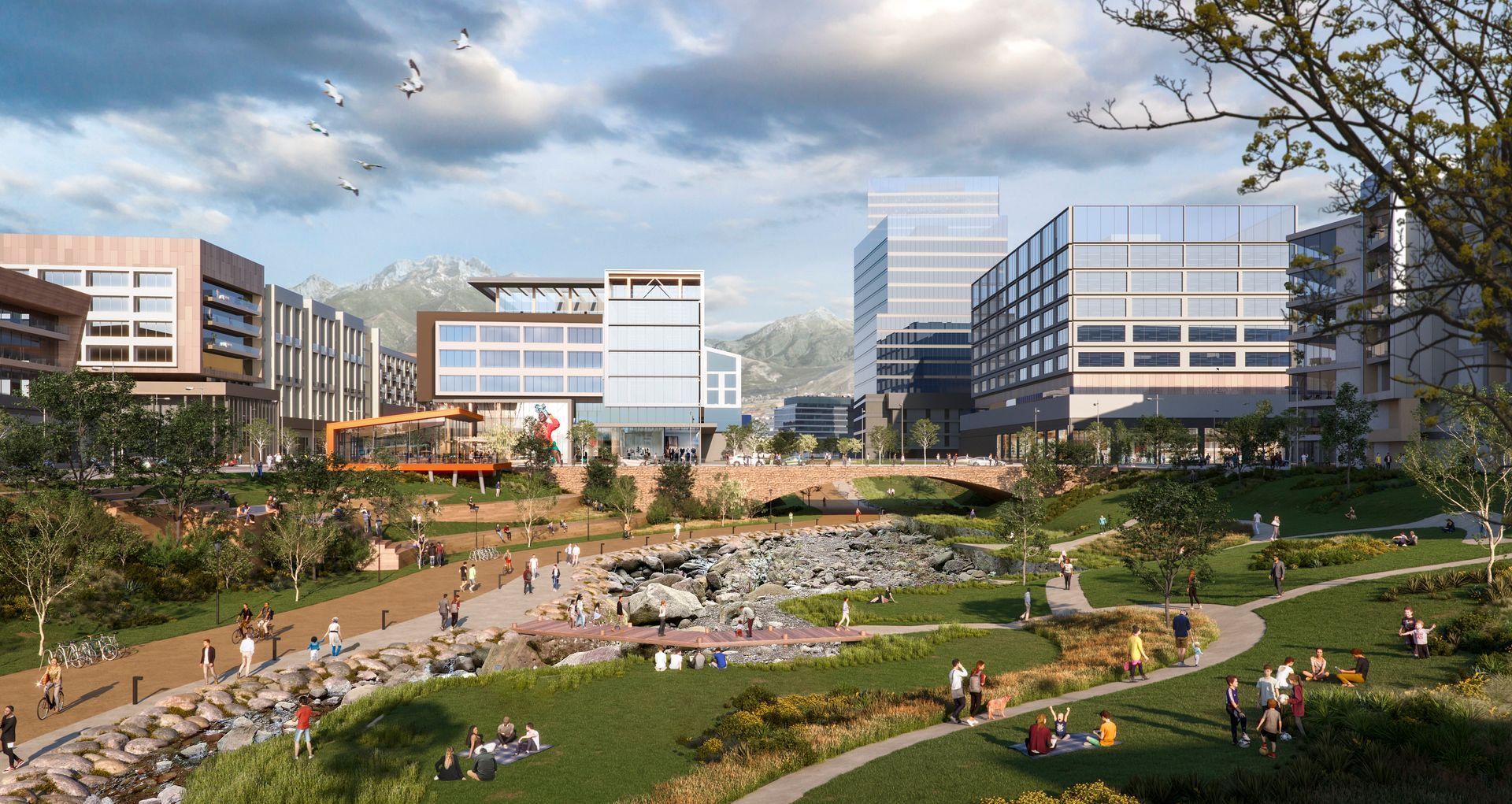
High Density, Innovation District
Utah’s population is expected to double to six million-plus residents by 2060, making the demand for all types of housing—especially affordable housing—brisk for the foreseeable future. The Point will include a wide array of housing options, with density being a driving factor on what ultimately gets built.
Density rates might not quite rival downtown Salt Lake but will likely exceed other cities within the county.
“It will be in that (downtown) character,” said Matheson. “It will be another center of activity in our region.”
“This will be another Central Business District (CBD) along the Wasatch Front—there is no parallel,” Ehman added. “We have a chance to be very intentional with every step, so we’re being thoughtful about our utility infrastructure, our approach to transit, our street grid, our connectivity.”
According to the document Point of the Mountain Buildout Scenarios Economic and Fiscal Contributions (February 2022), authored by Joshua Spolsdoff, Senior Economist, and John C. Downen, Deputy Director of Economics at the University of Utah, The Point will span approximately 24 years (2026-48) where “steady and thoughtful development” is performed to achieve high density. The overall scope calls for 7,400 residential units and allocates 8.5 million SF of space for office, retail, hotel, civic, and an “innovation district” that focuses on research and development, with the premise that marrying Wall Street-level business to world-class education will produce optimum long-term economic results.
The Baseline is the first major long-term phase of the development, with 2,800 residential units and 1.4 million SF of retail, hotel and office space. With land remediation, transportation and utility infrastructure dominating construction activity in 2024 (demolition is expected to be done by end of 2023), The Baseline will begin in earnest in 2025 with an estimated 10-year timeline for complete buildout.
The Framework Plan will take longer to unfold, with 4,600 residential units and 7 million square feet of nonresidential development, with significantly larger economic and revenue footprints.
Walkability will be a hallmark throughout, with various “mini-cities” within the 600-acre site featuring a healthy balance of residential and commercial buildings. Rio Tinto’s Daybreak development in South Jordan is very much a precursor for what The Point will ultimately become.
“What stands out to me is creating a 15-minute city where you can live, work, play, eat […] or get on a bike and ride to the top of Corner Canyon,” said Wadsworth. “We’re fine tuning what our mix (residential, office, retail, open space) is and what we’re building, how big the buildings are, how wide streets are.
There will not be a limit to building heights, Matheson and Ehman said, with the market dictating building activity. With Salt Lake City’s skyline getting a healthy dose of new skyscraper projects—including the tallest-ever building in the state currently under construction (Astra Tower, 40 stories, 450 ft. tall)—it’s likely The Point will house some iconic high-rise buildings. “We will deliver as much as the market will let us,” said Ehman. “It might not match Salt Lake but will surpass Sugar House in terms of density.”
Bullen said because the location will be “drawing people from both counties” the development will organically thrive, especially considering that Utah County is projected to grow at a faster clip in the future. “This is in the middle of two MSAs, where you would see enough of that need for density to occur,” he said.
“We’ve done some big (projects) before, but this is the top of the mountain—to be part of it is amazing,” said Wadsworth, in a nod to the importance of this project and the three firms’ collective investment in the proposal process and Phase I development plans. “It’s what you live for, what you wake up for. I see myself finishing my career with this project.”
